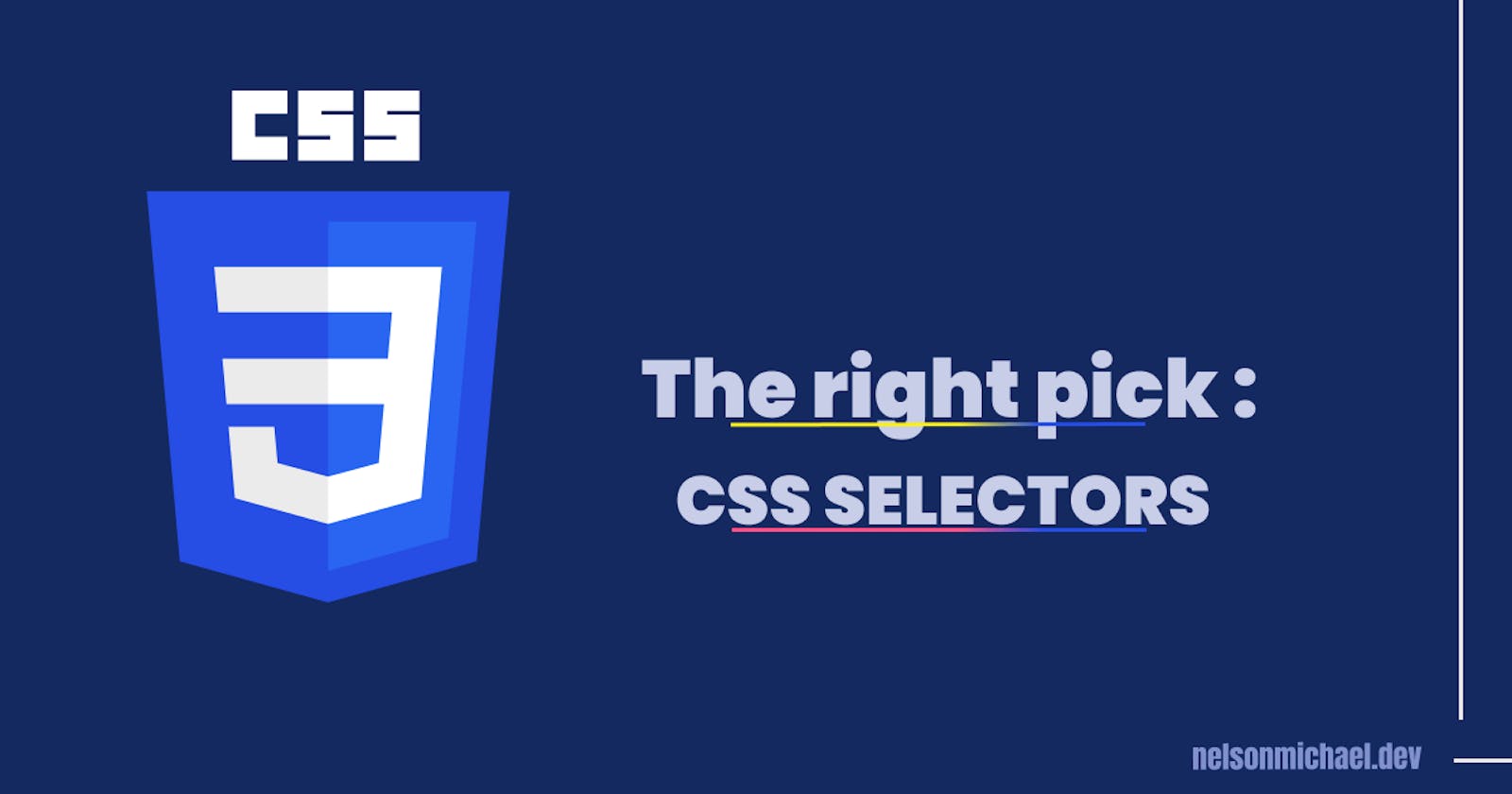When I started learning how to write CSS(cascading style sheet), one of the problems I faced was declaring style rules that just won't apply for some reason, well that was because I was either using the wrong selectors or I didn't know how to properly select an element when it was nested.
Selectors in CSS are rules that specify what styles would be applied to specific HTML elements. It is a way to select particular elements to receive a particular set of styling rules.
At the end of this article, you would be able to understand the full concept of CSS selectors and how to use them to apply styling rules to HTML elements.
Types of Selectors
- Element Selectors
- Class Selectors
- ID Selectors
- Universal Selector
- Attribute Selectors
- Grouping Selectors (Selector list)
- Combinator Selectors
- Pseudo Selectors
Now let us go over each type of selector and see their use cases.
Element Selectors
The Element selector is used to select specific elements by calling their tag name.
tagname {style properties}
p{
color:red;
}
in the example above we are styling the p tag, using the element selector.
Class Selectors
The class selector is used for applying the same style rule to multiple elements with the same class attribute.
.classname {style properties}
.wide-cover{
color:red;
font-weight:bold;
}
ID Selectors
ID selectors are used for selecting a specific element to be styled, the same ID can not be given to two or more elements.
#id_value {style properties}
#pacer{
border : 2px solid green;
}
Universal Selector
The universal selector (*) Asterisk can is used for styling elements of any type on a webpage.
*{style properties}
*{
text-align : right;
}
Grouping Selectors (Selector list)
The selector list can be used to group different elements to apply specific style rules to them.
element, element, element {style properties}
.classname, .classname, .classname {style properties}
#id_value, #id_value, #id_value {style properties}
element, .class_name, #id_value {style properties}
p, #pacer, .content{
text-align : right;
}
Combinator Selectors
- Adjacent sibling selectors
- Child selectors
- Descendant selectors
Adjacent sibling selectors
The adjacent sibling selector applies style rules to elements that come after a particular element only if they are both children of the same parent element
h2 + p {style properties}
<div>
<h2>Hello there</h2>
<p>It's a great time to be alive</p>
</div>
h2 + p {
color : red;
text-align : right;
}
Child selectors
The child selectors apply style rules to elements that are direct children of the parent element.
h2 > p {style properties}
h2 > p {
color : red;
text-align : right;
}
Descendant Selectors
The descendant selectors apply style rules to the elements that are descendants of an ancestor element (parent, parent's parent, parent's parent's parent, etc).
h2 p {style properties}
h2 p{
color : #ffffff;
cursor :pointer;
}
Pseudo Selectors
Pseudo selectors are special keywords that are added to a selector that specifies a state for when the style rules are to be applied.
h2 :hover {style properties}
h2:hover{
color : blue ;
}
in the example above, the style properties would only be applied when the cursor hovers on the h2 element.
find the index of more standard pseudo-classes here.
Conclusions
CSS Selectors are a very important part of CSS even as important as CSS itself, understanding how it works properly is very critical. it helps us pick and choose what particular element to receive a set of styling rules.
Congratulations, you have made it to the end of this article :satisfied: . hit me up or follow me on twitter @D_Kingnelson
